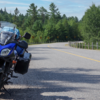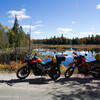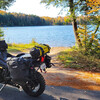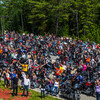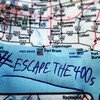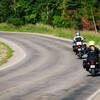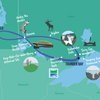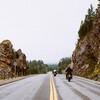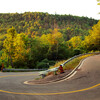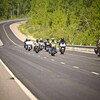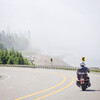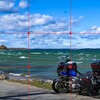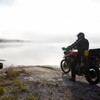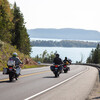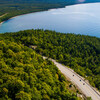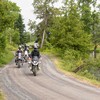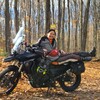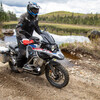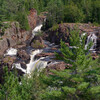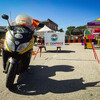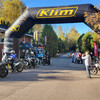
"Enjoy Your Stay"
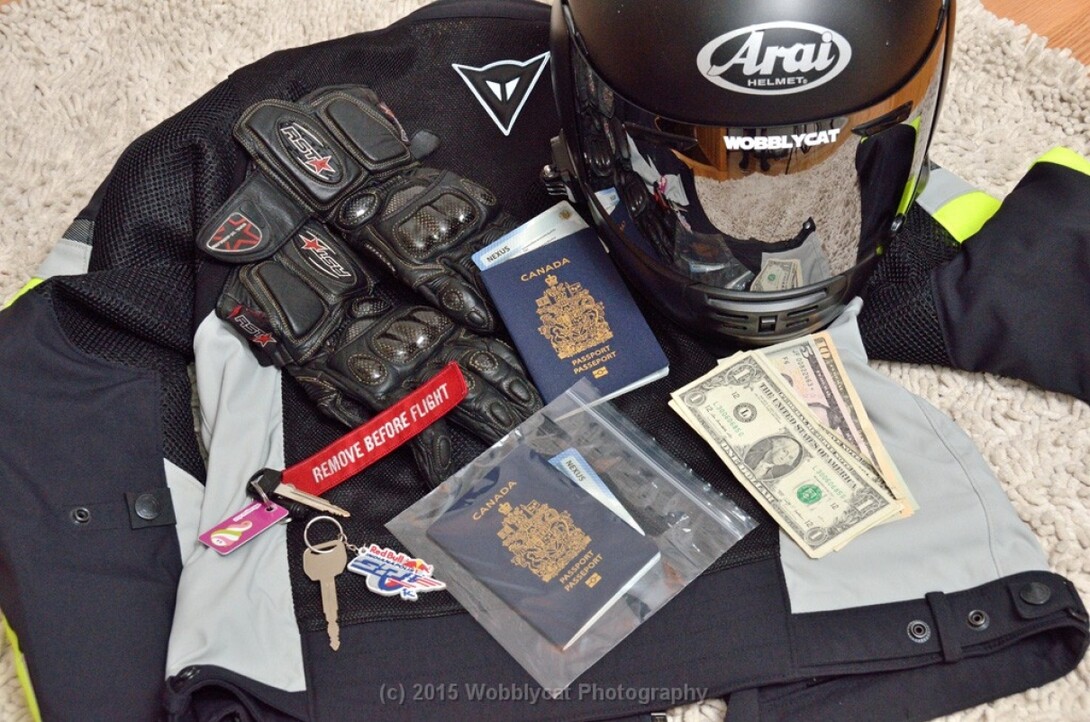
So you've ridden all the roads in Ontario and have decided to go on a motorcycle road trip south into the U.S. There are some unique considerations for border crossing on a motorcycle, but some simple preparation can make it a snap (unlike my friend who returned to Canada from a day trip with throwing stars with knives on them, and a magnum of vodka – true story!).
Pre-Border Crossing
Before you leave, make sure the following items are easily accessible. I usually keep mine in my pants pockets or a tank bag:
• Passport or Enhanced Ontario Driver’s License
• Nexus Card (optional, more on this later)
• Wallet
• Cash for tolls (in U.S. currency)
• Cell phone
Pack in re-sealable plastic bags if there is a chance of rain.
If you have an electronic speedometer, read your manual so you can easily change it to Imperial (Miles Per Hour, MPH) and back again. The same goes for your GPS. My wife prefers metric speeds and converts in her head (5 mph equals roughly 8kph):
• 30 mph = 48 kph
• 40 mph = 64 kph
• 50 mph = 80 kph
• 55 mph = 88 kph
• 60 mph = 96 kph
• 70 mph = 112 kph
At the Border
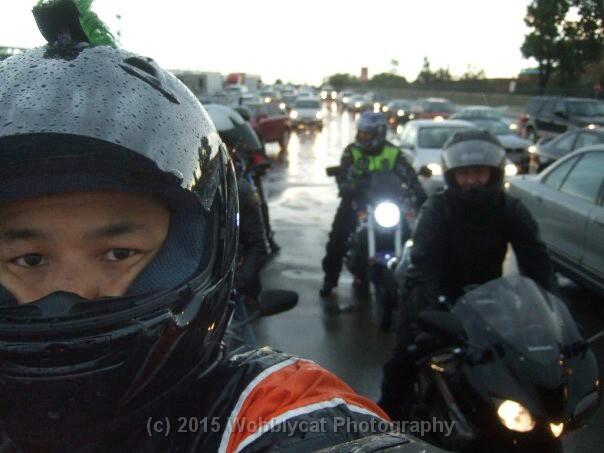
One of the most frustrating parts about traveling to/from the U.S. can be waiting in traffic at the border. To avoid long lineups, especially during long weekends in the summer:
• Avoid Peak Time: Arrive at the border during off-peak times, such as early morning (before 8am), and/or during weekdays. I suggest crossing during the daytime.
• Front of the Line: Nexus. A Nexus pass allows pre-determined low-risk Canadians expedited border crossing to and from the U.S. Most border crossings have a Nexus line, although some do not (eg. Queenston Lewiston Bridge). With some border crossings, the Nexus line isn’t until the very end of a single lane shared with non-Nexus holders, reducing the time-savings of Nexus (eg. the Ambassador Bridge in Detroit).
You can check border wait times in advance at the following websites (bookmark them on your smart phone for easy access on the road):
•Border Cross Wait times into the U.S.
•Border Crossing Wait times into Canada, including Forecasted Border Wait Times
If you do end up stuck in traffic at the border on your motorcycle:
Turn your engine off when you’re not moving, otherwise, your engine could overheat. If traffic is at a standstill, use the opportunity to get off your bike and stretch. Remove your jacket and helmet if it is hot and drink water to stay hydrated. Make sure you turn the key all the way to the off position to turn off your headlight and if possible push your bike in the line instead of starting it to save your battery. I learned this lesson the hard way and had to push my bike back into Canada!
If it might rain, bring rain gear. Duh! The only thing worse than riding in the rain, is sitting still in traffic in the rain. Again, I'm speaking from experience.
Crossing into the U.S.A.
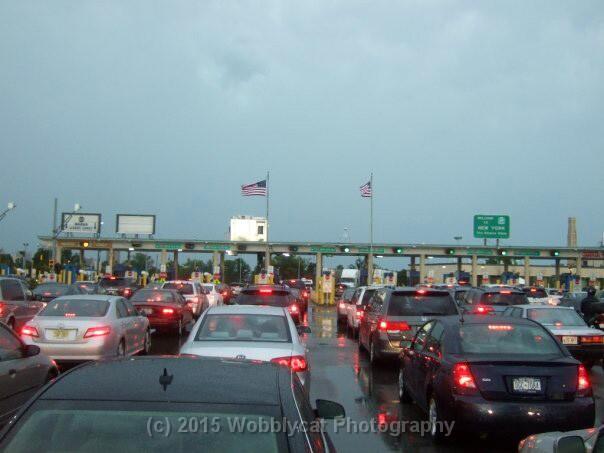
Prepare your answers ahead of time. Be respectful of the border guard and answer their questions truthfully and directly without embellishment. Remember, they have the right to further inspection. Additionally, I suggest taking off your helmet and sunglasses before they ask.
Typical questions:
Q1: What is your license plate? A delay in answering this question may lead them to think the vehicle does not belong to you.
Q2: Where do you live? They're trying to figure out if you are who you say you are, and if your documentation is up to date.
Q3: What is the nature of your visit? On a road trip, the answer should be "Vacation" or "Pleasure," otherwise they will get into a line of questioning to see if you've filled out the correct documentation for working in the U.S.
Q4: Where are you going? Give your most distant destination as well as specifically where you are staying the first night. Have a plan and articulate it clearly.
Q5: How long are you staying? Give a specific date or time frame, eg. August 18 or 1 week. Canadian visitors are generally granted a stay in the U.S. for up to six months in any rolling 12 month period.
Q6: Are you bringing any alcohol, drugs, food into the U.S.? Be truthful: anything controlled that you don’t declare that is discovered is subject to a fine. Check the U.S. Customs and Border Protection web site for the latest updates on U.S. entry requirements for Canadians and others.
Returning to Canada
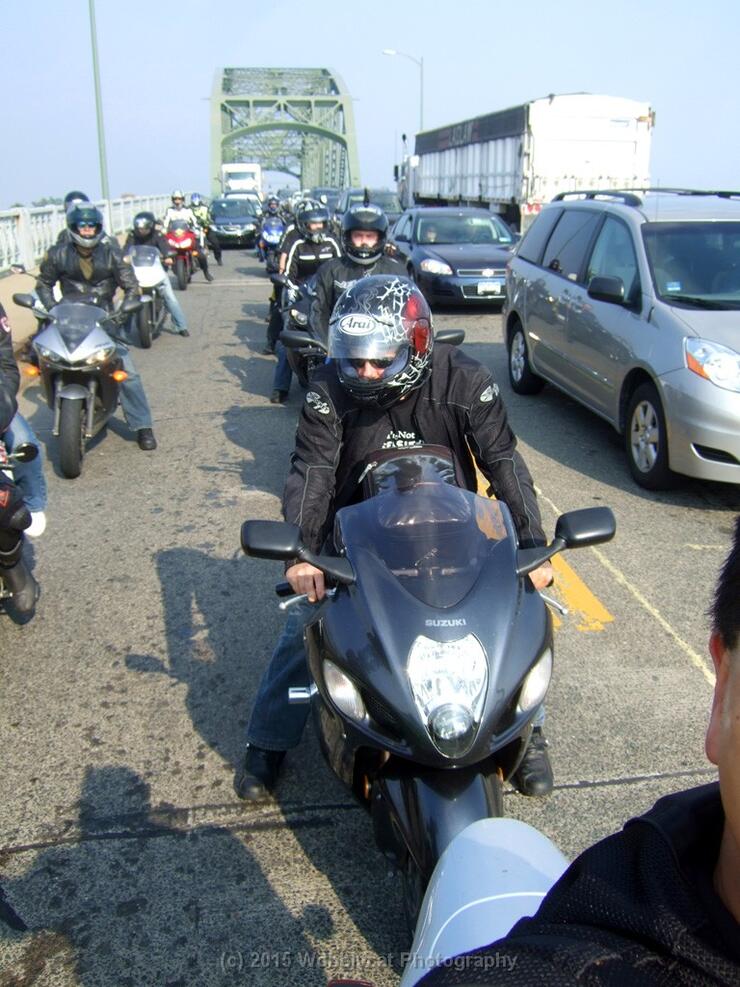
This part is usually easier, as you are returning to your home country. The same principles as crossing into the USA apply but now the emphasis is on what you are bringing back into Canada.
Q1: How long were you out of Canada? This determines your purchase limits (also called personal exemption amounts, in Q2). They also want to see if this matches the computer system for when you left the country. If it doesn't match, they will probe further.
Q2: Do you have anything to declare? Specifically they want to know the value of goods purchased in the US that you are bringing back into Canada, plus any alcohol, tobacco or other controlled goods.
You should've tallied up ahead of time the dollar value of all items you've purchased in the U.S. and are bringing back in the Canada. Be prepared to procure receipts if requested. Any amount over the personal exemption amounts is subject to duty/tax. The exemptions are:
• 24 - 48 Hours: $200
• 48 Hours - 7 days: $800
• 7+ days: $800
Note: There are prescribed limits for alcohol and tobacco associated with each personal exemption amount.
Hopefully these tidbits will allow your border crossings to be as smooth as butter(tarts). Happy trails!
P.S. Pro-tip: Some gas stations require you to enter your postal code when you swipe your credit card. Enter the three numbers in your postal code followed by two zeros. eg. if your postal code is N1L 3W7, you would enter "13700." This trick works at least half of the time for me.
Update August 2019:
Despite some states (even those that share a border with a Canadian province) legalizing the use of marijuana and cannabis based products, Canadians must be aware that it is illegal to cross into the U.S. with these products. The US border is governed by federal law, and it is a federal offense to bring cannabis and related products into the US. This has recently made the headlines:
Canadian woman faces lifetime ban after getting caught with CBD oil at U.S. border
Don’t let this be you, and leave your cannabis and related products at home, even if they have been prescribed by a doctor for medicinal use.
Recommended Articles

Bucket List Motorcycling in Ontario, Canada 2025

Ontario's Best Twisties: Five Roads to Get Your Lean On

The Big Belly Tour—A Complete List of Ontario's BBQ Joints

It's Bike Night in Ontario 2024

Ontario's Top Twisties
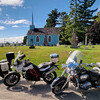
Have You Ridden Canada's OG Highway? Here's Why Every Rider Needs to Hit Up Historic Highway 2
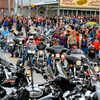
23 Amazing Photos That Prove PD13 Is Still The Best Motorcycle Event Ever
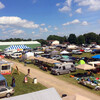
Motorcycle Swap Meets in Ontario—The Complete List for 2025

And a Vespa shall lead them all...
